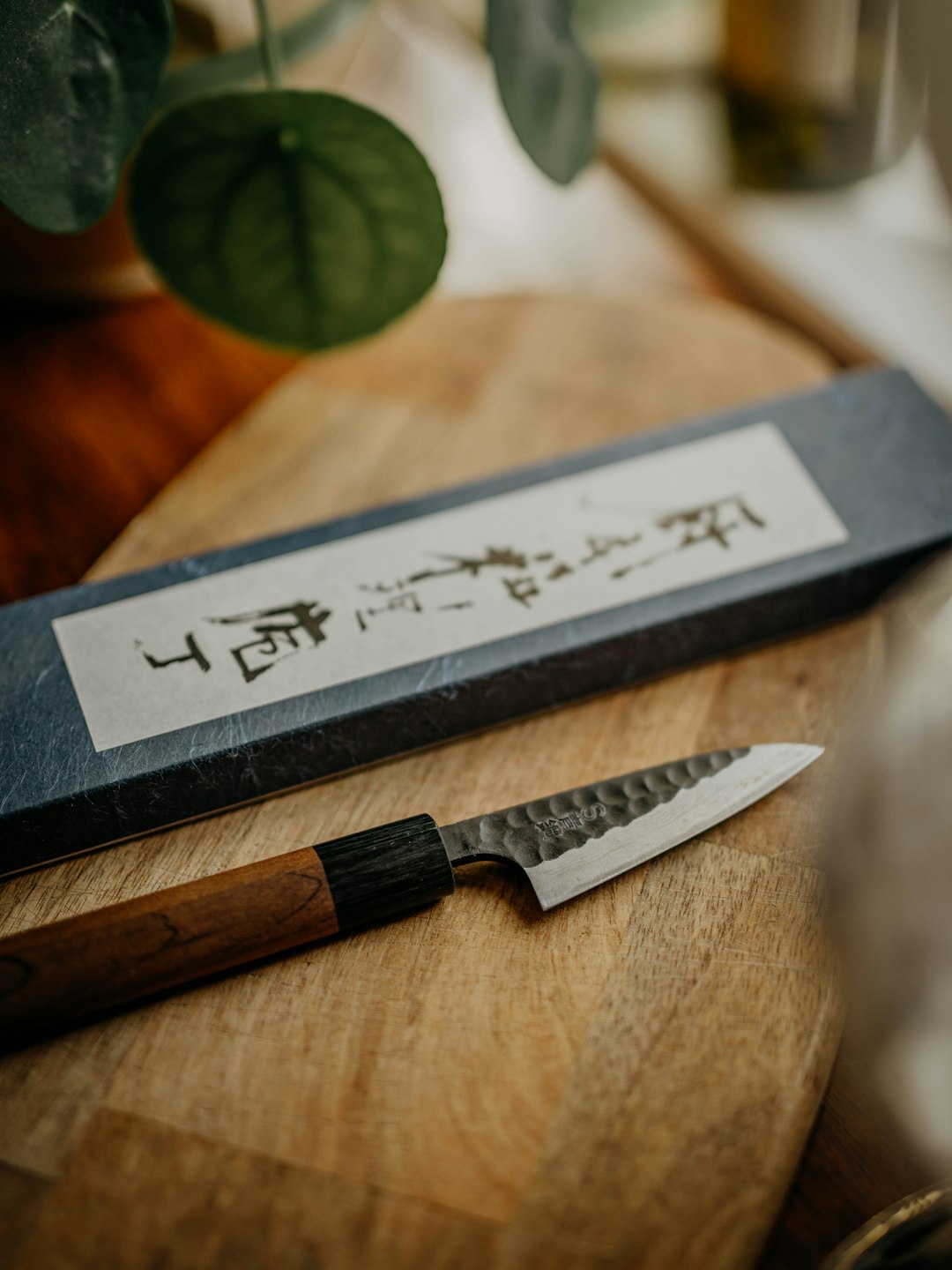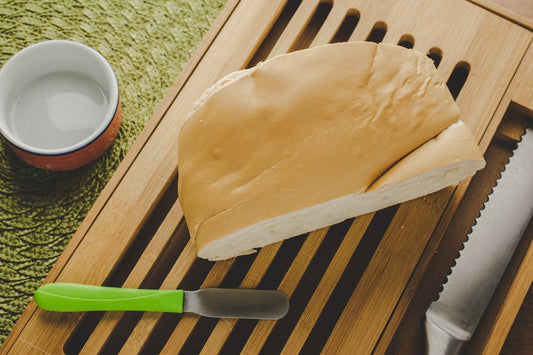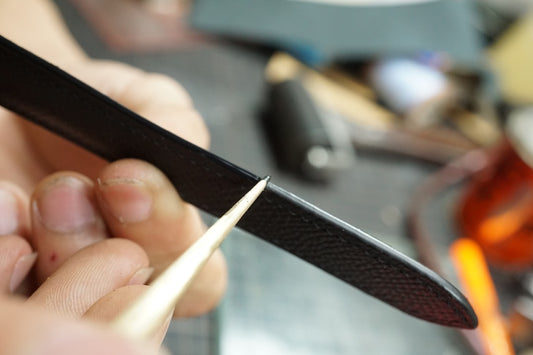
Share
Mastering Japanese Knife Sharpness: Essential Water Stone Sharpening Tips
Estimated reading time: 12 minutes
Key Takeaways
- Understand the unique characteristics of Japanese knives and why they require special sharpening techniques.
- Learn the difference between sharpening and honing, and when to use each method to maintain your knives.
- Discover the best tools for sharpening Japanese knives, including selecting the appropriate water stones.
- Master the correct sharpening angle and process for achieving a razor-sharp edge.
- Gain insights into proper maintenance and care to extend the life and performance of your Japanese knives.
Table of Contents
Understanding Japanese Knives: Key Traits
Japanese knives are renowned for their exceptional sharpness, harder steel alloys, and thinner, more acute edges. Their design allows for precise, delicate cutting—slicing sashimi, dicing vegetables, or creating paper-thin cuts of beef. Japanese knives are crafted from harder steel and feature thinner, sharper edges, allowing for more delicate and accurate meals every time.
Japanese knives often come in two types of blade geometry:
- Single-bevel blades: Sharpened only on one side. These require unique skills to sharpen and are found in traditional knives like yanagiba and usuba.
- Double-bevel blades: Sharpened on both sides. These are more similar to Western-style knives but still maintain the steeper, sharper angles Japanese blades are known for.
Unlike Western knives, traditional Japanese knives often have single-bevel edges, requiring specific sharpening techniques. Their unique steel composition and edge geometry necessitate precise sharpening to preserve the blade's performance. Using incorrect methods can damage the edge or reduce lifespan, which is why following a dedicated Japanese knife sharpening guide is essential. For a deeper understanding of different knife types, refer to our Japanese Chef Knife Types: A Comprehensive Guide to Choosing the Perfect Blade.
Sharpening vs. Honing
What is Sharpening?
Sharpening means removing a small amount of metal from the blade to create a new, sharp edge. This is typically done using whetstones or water stones. It restores a knife’s cutting ability when it becomes dull, worn, or nicked.
“Sharpening involves grinding away material from the blade to form a new, razor-sharp edge.” (DaiTool.com - Sharpen Knives with a Whetstone)
What is Honing?
Honing simply realigns the blade’s edge without removing much (if any) metal. It helps straighten out microscopically bent or rolled edges using a honing rod or strop.
“Honing straightens the existing edge, maintaining sharpness between sharpenings.” (KnifeWear.com - Sharpening with Japanese Whetstones)
When to Hone vs. When to Sharpen a Japanese Knife
- Hone regularly: This keeps the edge aligned day to day.
- Sharpen as needed: Only go to the stones when honing no longer brings your knife back to a satisfying level of sharpness.
Honing is a quick, daily or weekly maintenance step, while full sharpening is less frequent but more intensive. Understanding honing vs sharpening Japanese knife care will extend the life and performance of your blades.
Choosing the Right Tools
Selecting the best whetstone for Japanese knives and the proper supporting tools is critical for an effective, safe sharpening process.
Essentials for Sharpening
1. Whetstones (Water Stones):
- The primary tool for sharpening Japanese knives.
- Let you create, refine, and polish the thin, hard edges that define Japanese steel.
-
Recommended Grits:
- Coarse (220–400 grit): For repairing chips or damaged edges.
- Medium (1000–1500 grit): General sharpening, suitable for restoring everyday sharpness.
- Fine (4000–6000+ grit): For polishing and honing, giving that signature razor finish.
Selecting the right whetstone grit is crucial for achieving the desired edge.
2. Stone Holder:
- Stabilizes your whetstone, preventing it from moving during sharpening, which ensures user safety and even sharpening.
3. Flattening Stone:
- Water stones wear down and can develop low spots. A flattening stone keeps the sharpening surface even for consistent, repeatable results.
Recommendations for the Best Whetstone
Reputable brands like King and JCK Special Combination stones are popular choices and offer proven performance. Quality whetstones from trusted brands ensure effective sharpening. Some fine-grit stones (4000–10000 grit) may be “splash-and-go,” needing only surface wetting, while coarser stones require soaking before use.
Always match your knife type and sharpening needs with the correct grit for the task.
Sharpening Angle for Japanese Knives
Why Sharpening Angle Matters
The sharpening angle for Japanese knives determines both how sharp your edge will be and how long it will last. Too steep or acute an angle (lower degrees) gives maximum sharpness but sacrifices durability. Too wide an angle (higher degrees) dulls the edge and defeats the purpose of Japanese blades.
Incorrect angle application can result in chipping, rolling, or an uneven, ineffective edge.
Guidelines for Achieving the Correct Angle
- Japanese kitchen knives are typically sharpened between 10°–15°.
- Use the “two coins” method:
- Stack two coins flat under the blade spine to approximate the desired angle when sharpening.
Tips:
- For beginners, angle guides can help maintain consistency.
- Regular practice improves your ability to judge and hold the correct angle.
- Visualizing a slice of pizza or wedge can aid in developing muscle memory for the angle.
Maintain a steady sharpening angle for Japanese knives every stroke to maximize sharpness and blade life.
Water Stone Preparation and Tips
Properly preparing your sharpening stone and workspace is crucial to successful results.
Preparing the Water Stone
-
Soak coarse and medium-grit stones (220–1500 grit) for 15–30 minutes before use.
- Watch for bubbles to stop rising.
- Soaking ensures the stone saturates, preventing it from drying during sharpening.
-
Fine-grit stones (4000–10000+) may only need surface wetting.
- “Splash-and-go” stones are convenient for quick sharpening sessions.
Stone Maintenance Tips
-
Keep the Stone Flat: Use a flattening stone after each sharpening session or when you feel uneven surfaces.
- A flat stone provides even contact with the blade, ensuring consistent sharpening.
-
Maintain Adequate Moisture: Re-wet the stone as needed during sharpening.
- Keeping the stone wet reduces friction and enhances sharpening efficiency.
-
Clean and Dry: Rinse the surface after use, and always let stones air-dry completely before storing.
- Proper care prevents damage and extends the life of your water stone.
Following these water stone sharpening tips ensures your stones perform at their best every time and last longer.
Step-by-Step Guide to Sharpening
This section will walk you through how to sharpen Japanese knives using water stones, step by step.
1. Setting Up
- Soak your stone as instructed above.
- Place the water stone on a stone holder, rubber mat, or a damp towel to prevent slipping.
- Keep your workspace organized and well-lit.
2. Assessing the Knife
- Inspect the blade for:
- Nicks, chips, or damage.
- Uneven or rolled edges.
- Address any significant chips or bends before you begin standardized sharpening.
3. Sharpening Process
Holding the Knife Correctly
- Grip the handle firmly with your dominant hand.
- Place your index and middle fingers of the opposite hand along the spine above the edge for control and even pressure.
Maintaining the Correct Angle
- Use the two coins method or an angle guide to maintain 10°–15° angle.
Sharpening One Side of the Blade
- Start with the heel (back end) of the knife against the stone.
- Apply gentle, even pressure with your fingertips.
- Slide the blade in a sweeping motion from the heel to the tip, maintaining a consistent sharpening angle.
- Cover the entire length of the blade with each stroke.
- Repeat strokes smoothly until you feel a burr (a fine, rough edge) on the opposite side.
Sharpening the Other Side
- Flip the knife and repeat the sharpening motion on the other side.
- Ensure pressure and movement are consistent—this provides an even, balanced edge.
Sharpening the Tip
- As you approach the tip, raise your elbow slightly to keep the edge aligned to the stone.
- The tip is often the first area to dull; work gently to maintain its shape.
Using Finer Grits
- Once your edge feels sharp and you’ve raised a burr on both sides, move to a finer grit stone (4000–6000+).
- Repeat the sharpening process for both sides to polish and refine the edge.
- Polishing with a finer stone enhances the cutting performance and extends sharpness.
4. Removing the Burr
- Reduce pressure and gently slide the knife along the stone, alternating sides with each pass.
- This removes the burr, leaving a crisp, clean edge.
- You can also use a ceramic honing rod to finish deburring.
Removing the burr ensures the knife edge is smooth, durable, and exceptionally sharp.
5. Testing Sharpness
Perform safe, reliable sharpness tests:
- Paper Test: Slice through a piece of paper smoothly.
- Tomato Test: Cut into a ripe tomato without crushing.
These tests confirm blade sharpness and readiness for kitchen work.
6. Cleaning Up
- Rinse your knife, dry thoroughly, and clean the water stones.
- Let stones air-dry completely before putting them away.
Visual Aids for Sharpening Technique
- Knife Angle Diagram: Shows the 10°–15° correct position relative to the stone.
- Stroke Motion Illustration: Demonstrates movement from the heel to the tip in a steady, sweeping pass.
- Hand Position Chart: Highlights where to place your fingers for stability and control while sharpening.
Mastering how to sharpen Japanese knives with this Japanese knife sharpening guide will turn blade maintenance into an easy, rewarding ritual.
Maintenance and Care for Japanese Knives
Proper care extends your knife’s life and enhances your sharpening efforts.
Post-Sharpening Care
- Clean the knife: Use warm, soapy water to remove debris or stone slurry.
- Dry immediately: Prevents rust or corrosion.
-
Proper storage: Store your knife in:
- A wooden knife block
- A sheath (“saya”)
- On a magnetic strip
Protecting the edge prevents dulling and damage, keeping your knife sharp longer.
Ongoing Maintenance
-
Regular Honing: Use a ceramic honing rod between sharpening.
- Routine honing extends the time between sharpenings by maintaining alignment.
-
Appropriate use: Only use Japanese knives on wooden or plastic cutting boards.
- Avoid cutting hard materials like bones or frozen foods to prevent chipping.
- Keep stones clean and level: Store in a dry, ventilated area.
Apply these water stone sharpening tips after each use and sharpening session to ensure your blades always perform at their best.
Conclusion
By mastering these water stone sharpening tips, you ensure your Japanese knives perform at their best. Consistent use of proper sharpening techniques produces sharper, safer, and longer-lasting blades. Maintaining knife sharpness is both a craft and a necessity in the kitchen.
Regular maintenance and correct sharpening habits not only protect your investment but also enhance your overall culinary experience. A well-sharpened Japanese knife makes every preparation task easier and more enjoyable.
Call to Action
Put these water stone sharpening tips into practice and feel the difference in your kitchen. Try refining your sharpening skills today and let us know your experience or share your favorite sharpening secrets in the comments!
For more insights on knife maintenance, sharpening stones, and expert culinary tools, subscribe to our newsletter and never miss a new guide.
Subscribe NowFAQ
How often should I sharpen my Japanese knives?
The frequency of sharpening depends on usage. For regular home cooking, sharpening every 3-6 months is typical. Regular honing can maintain the edge between sharpening sessions.
Can I use a honing steel on my Japanese knife?
It's recommended to use a ceramic honing rod for Japanese knives. Traditional steel honing rods can be too abrasive for the harder steel used in Japanese blades.
What if my knife has chips or damage?
Use a coarse grit stone (220–400 grit) to repair chips and damaged edges before moving on to finer grits for sharpening and polishing.
Previous Blog Posts
```


